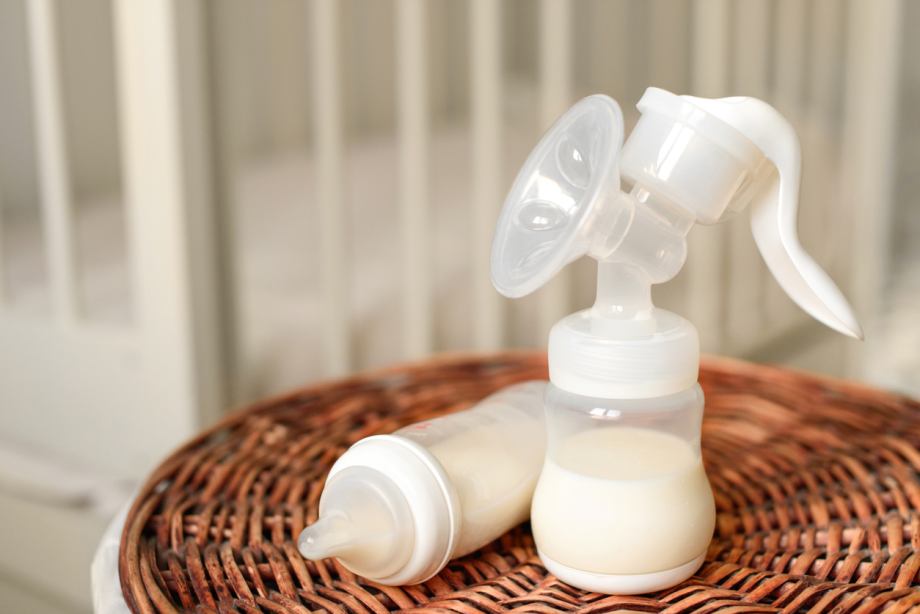Lactation After a Loss

Losing a baby is one of the worst things anyone can go through. After growing a baby for ten months inside of you, feeling its every tiny movement and listening to its hiccups, experiencing a stillbirth is heartbreakingly tragic. Navigating the grief after the death of a baby will often require appropriate support, whether it be from family members, organizations, or certain methods of self-care.
The first few weeks after losing a baby, your body will still be full of hormones and will be feeling the effects of being kicked into new mom mode. It doesn’t realize that the baby was stillborn. Most women’s bodies will follow the natural progression and start lactating or producing breast milk.
As a baby breastfeeds, the mom’s body produces oxytocin, a hormone that triggers the let-down (milk ejection reflux). But colostrum (early breast milk) can be produced by some moms as early as 16 weeks into the pregnancy, and the body will keep producing breast milk after the stillbirth.
This can be devastating if you have just undergone a stillbirth, because your body is acting as a cruel reminder of what has happened. This can be very traumatic - but there are ways to help yourself emotionally and physically.
How Long Does the Body Produce Milk After a Loss?
After a stillbirth or infant loss, the body can take 2-3 weeks to stop producing breast milk. Breast milk leakage may continue for even longer. If the bereaved woman continues to express milk, milk production will continue until she stops.
Does Grief Affect Breast Milk?

Stress is the number 1 killer of breastmilk supply, especially in the first few weeks after delivery. For a bereaved woman, between lack of sleep and rising levels of certain hormones such as cortisol, stress can dramatically reduce milk supply.
How To Take Care of Yourself When Lactating After a Stillbirth or Infant Loss
Taking care of yourself and your lactating breasts after a loss is an essential part of your physical and emotional recovery. It will help keep your breasts comfortable and reduce the risk of developing blocked milk ducts and mastitis (inflammation of the breast tissue).
Certain medications, including Cabergoline (often sold under the brand name Dostinex), can be used to stop breast milk production within the first 24 hours after giving birth. You should discuss the option of taking medication with your healthcare provider.
Women who have experienced a stillbirth should not restrict fluids or bind their breasts with a tight bra. This can increase the risk of developing blocked milk ducts and mastitis.
If lactating breasts become uncomfortable:
- Apply wrapped cold compresses (gel ice packs or a bag of frozen peas) directly on your breasts. Cold packs need to be changed frequently so keep at least 3 packs on hand and cold at all times.
- Avoid putting heat packs on your breasts, and try not to take hot showers.
- Take mild pain relief such as ibuprofen or acetaminophen as directed by your doctor to relieve pain and discomfort.
- Express enough milk to relieve fullness and keep your breasts comfortable to avoid painful breast engorgement. This will not increase your milk supply because you are not emptying your breasts. After the loss of your baby, you may need to continue to express milk for several days postpartum.
What to Wear While Lactating

According to La Leche League, when your milk first comes in, you may find your breasts are considerably bigger than normal and often engorged. The support of a well-fitting bra can help. Avoid bras that are too tight - this can put too much pressure on your breasts, resulting in plugged ducts.
Some women choose to wear nursing bras while others choose to wear styles they wore before pregnancy. Bras with an under-wire should be avoided as they can contribute to blocked ducts and mastitis.
Wearing a bra at night can help prevent leaking on clothes. Until the milk supply levels out, many women wear nursing pads during the night to limit the number of clothes that need to be washed due to milk leaking. Wearing a bra will help hold the pads in place. If you don’t want to wear a bra, but are worried about your breasts leaking overnight, an excellent option is wearing a maternity tank top with a built-in shelf bra to hold your nursing pads in place.
What Should I Do With My Breast Milk?
Deciding whether to donate the breast milk to a mother’s milk bank or to opt for lactation suppression is a personal decision that is no one’s but the bereaved. You should do whatever you feel will help you during this very difficult time, and try to take comfort and advice from family and those who have your best interests at heart. Be patient with yourself.
If you decide to stop lactating after your milk supply is established, over several days’ time, gradually decrease the number of times you express milk and the amount of milk removed from your breasts. Remove enough to keep your breasts comfortable. You can do this through hand expression or using a breast pump. Keeping your breasts comfortable is important for women who’ve been expressing with a pump for more than two weeks. The decrease in expression can take place either in the hospital or after you go home.
Deciding to Donate to a Milk Bank
Some bereaved individuals will choose to donate their breast milk as proof to themselves that their baby was there, and as an act to acknowledge motherhood. Others donate because they want to share their baby's milk with other babies in need, especially at a time like this when formula is scarce. Other people donate because they can’t bear the idea of wasting their baby's milk. For some, milk donation is cathartic in their time of grief. Ultimately, the choice and reasons are yours - and yours only.
If you do decide to donate your breast milk, expressed breast milk can be donated to a Milk Bank. Becoming a milk donor involves a screening process similar to donating blood which includes an interview, a written questionnaire, and blood testing. When you start the process, please be sure to indicate that you have experienced the death of your baby. If you are approved to donate, a Milk Bank should waive the minimum donation amount for you, and gratefully accept any amount of breastmilk you are able to provide.
Below, you can find some milk banks and associations to turn to or donate to during this difficult time:

